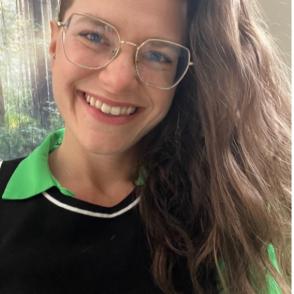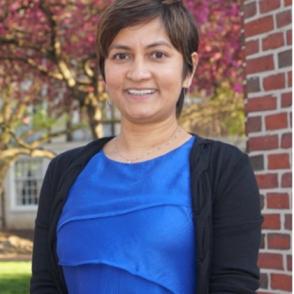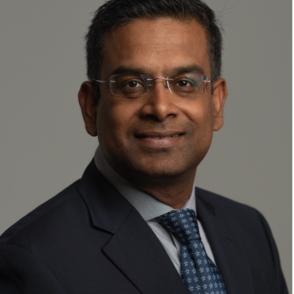The Bruning Teaching Academy (BTA) provides a developmental, peer-to-peer approach for continuous improvement and implementation of evidence-based best practices. The program seeks faculty who have demonstrated teaching excellence and considers overall years of teaching experience as well as years at OHIO. Participants come together throughout the academic year to discuss instructional strategies, provide constructive feedback and work toward one common goal — improving teaching.
BTA participants set goals they hope to accomplish each semester, following a backward design model for instruction that emphasizes the importance of planning the desired outcomes before deciding the teaching and assessment methods to use.
Bruning Teaching Academy Goals
- Write clear learning goals that are student-centered, use active verbs, and are measurable.
- Align learning activities with the learning goals.
- Create assessment tools that are aligned with the learning activities and accurately assess achievement of the learning goal.
- Employ techniques that encourage student participation in the learning activities and engagement with the learning goals.
- Share ideas and garner feedback related to teaching and learning with a network of colleagues across campus.
- Observe a colleague teach, review their materials, and provide feedback that would help improve their teaching.
Apply to the Bruning Academy
Applications are accepted annually, with announcements of deadlines in the spring semester. Those applying submit the following:
- Letter of application indicating why you would like to be involved in this project and what undergraduate course you teach fall semester that you would like to improve.
- Brief statement of teaching philosophy (500 words maximum).
Syllabus for the undergraduate course you would like to focus on fall semester. - Teaching evaluations for that course when last taught.
- Brief email from your department chair indicating they give you permission to participate if selected. We need your department chair’s permission to pay you a stipend.
Please address any questions to Linda Rice .
2025-26 Faculty

It’s been exciting to see the CTLA gain prominence in recent years and be part of some of its endeavors from workshops and focus groups to leading the development of the Peer Teaching Observation Program (PTOP) in 2023-2024 and now facilitating the return of the Bruning Teaching Academy.
I’m the James S. Reid/Standard Products Company Distinguished Teaching Professor in the Charles J. Ping Institute for the Teaching of the Humanities, Professor of English, and Director of the Master of Arts in English (MAE) Online program.
As a teacher of teachers, curriculum development and course design are my passion because they are multifaceted endeavors that involve content mastery, organization, presentation, creativity and pedagogical know-how. I enjoy the challenge of figuring out how to put the various pieces together in a way that resonates well with students and steps instruction so that students can accomplish big tasks without being overwhelmed.
I’ve found that students respond well to and ultimately perform at higher levels when they have routine accountability. Students are savvy and figure out early in the term which professors will hold them accountable for completing course readings and assignments and which ones won’t. Class meetings are always better when students come prepared, and I want to be on the receiving end of that, so I employ multiple means to help ensure students come ready to learn and participate.
It’s also important to provide students with a balance of recognition for what they’ve done well and a continued push to help them achieve at higher levels. Clear and detailed assignments, models and rubrics help students to succeed and support students’ value of consistency and transparency. I aim for my classroom to be like my home and relationships – where we each do our part, accept responsibility, develop trust over time, demonstrate mutual respect, fairness, and kindness, and have fun as we journey together.

Learning to speak another language is an inherently intrapersonal experience. In my language-learning and language-content courses alike, it is important for students to take an active role in deriving meaning from input and expressing themselves in the language. I implement a student-centered approach primarily through Task-based learning and acting as communication facilitator as opposed to a sage on the stage grammarian.
In my courses, Spanish is the primary means of communication, although I cater to skill-levels with consistent repetition and rephrasing. That way, students have more opportunities to grasp the main message and notice key structures. I also incorporate communicative tasks to guide students through meaningful conversation. This encourages students to draw from their own experiences and replicate real-world applications of the language.
More recently, I have been inspired by my experience with fellow language teachers at the Heritage Language Teacher Workshop run by the UCLA National Heritage Language Resource Center. Not only did I receive invaluable information on working with heritage speakers of Spanish, but I also learned about Project-based learning, which I have also began to incorporate in my teaching as an additional a student-centered method for students to engage with real-world problems through projects while at the same time developing skills.
I always strive to be the best teacher I can be and want to continue to evolve and change my practice. This is why I am excited to be a member of the Bruning Academy.

I approach teaching as a dynamic process of meeting students where they are and helping them move forward with clarity and confidence. My teaching style is grounded in flexibility, transparency, and relevance. I believe students learn best when they feel that material is meaningful to their lives and when they’re given the tools to take ownership of their understanding. I design my classes to encourage participation, curiosity, and honest reflection, inviting students to engage not only with the content, but with the process of learning itself.
I rely heavily on active learning, formative feedback, and a constant loop of adaptation. I use technology not as a gimmick but as a bridge—to help students visualize abstract concepts, to create practice opportunities, and to allow for self-paced exploration. I’ve moved away from rigid models and toward more student-responsive methods that embrace the variability in how students learn. When something isn’t working, I change it. That responsiveness is central to how I teach.
Above all, I see teaching as a collaboration. I don’t need to be the center of the room, I need to be the person who structures the space so students can do the hard, rewarding work of learning. And I believe that learning happens best when students feel seen, supported, and challenged.

Education is not about delivering information—it’s about co-creating meaning. I help students live into their learning, where story invites reflection, imagination fuels inquiry, and teaching becomes an act of purpose.
I believe that story is not just something we teach—it’s how we learn. Story is pedagogy: a living, breathing approach through which real transformation happens. I help educators, especially those in training, discover the value of their own narratives and those of their students. When teachers understand and honor their stories, they begin to see how personal identity and professional practice are deeply connected. I guide students in blending their voices with disciplinary knowledge, showing how story can enrich both content and connection.
I also believe that reading and writing are embedded in all disciplines. Literacy, to me, is not simply a skill—it’s a tool for meaning-making, inquiry, and creativity. I work to help future educators see literacy as an essential, integrated part of their teaching.
Raised on stories, I’ve spent my life sharing and exploring them in 44 states and internationally in England, Japan, Qatar, Singapore, Scotland, and Canada. I earned a Doctorate in Storytelling and Education from The Ohio State University, and I now teach at Ohio University Lancaster, where I continue to weave story and literacy into all aspects of my teaching.
I’m the author of Playing with Stories: Story Crafting for Writers, Teachers, and Other Imaginative Thinkers .
Teaching isn’t about delivering information—it’s about co-creating meaning. Story invites us to reflect, inquire, imagine, and ultimately, teach with purpose.

I am an instructor who prioritizes accessibility and student engagement. As such, it is not uncommon to walk by a Grover Center classroom and see me standing on a chair while I teach my sign language courses. It is another common sight to catch a glimpse of me taking a pause from the lesson to tell a story in sign that incorporates new vocabulary while giving students a chance to get to know me and apply their learning in an informal assessment.
The hallmarks of my teaching style are daily physical and mental wellness check-ins, silly mnemonic devices, diligent scaffolding, facilitated peer learning, and as many moments to laugh and connect on a personal level as possible.
Motivated by my time working in Special Education, sign language interpreting, and ASL education, I take a student-centered approach to teaching. I factor into my teaching philosophy concepts from Maslow’s Hierarchy of Needs, Zones of Proximal Development, Universal Design for Learning, Trauma-Informed Care, Bloom’s Taxonomy, immersion, and more. I have been inspired by talented ASL and HSLS co-workers here at OU, and I hope to follow in their steps and continue to grow as an educator every year that I am teaching.

I am an Assistant Professor of Marketing in the College of Business (CoB). My interest in pedagogy translates to my commitment towards achieving excellence both in my classes and in my research. I strive to connect the dots from academia to practice for students and deliver impactful topics that are relevant to them.
In all my interactions with students, I believe in two aspects of my teaching approach (1) hands-on learning-by-doing methods, and (2) timely feedback. At the Undergraduate Level, I am currently teaching Marketplace Analytics (MKT 4700) and Consumer Marketing (MKT 3020). I am also involved with the Center for Consumer Research and Analytics (CRA) and I teach an Independent Research course (MKT 4940) wherein CRA students work on marketing research projects with a company.
Additionally, I love advising Honors Tutorial College students as their faculty mentor for semester-long tutorials, and as a thesis advisor. Until Spring 2025, I was teaching Introduction to Marketing (MKT 2400) as a part of the CoB’s signature Integrated Business Cluster (IBC) experience. I feel fortunate that the IBC courses provided me an opportunity to connect with students who were typically in their Freshman or Sophomore years. I am hoping to see their familiar faces as I teach the upper-level classes, and I would love to see their journey as they progress through OU.
At the graduate level, I am involved with Executive Education Program for Sogeti & CapGemini participants from The Netherlands. As a part of my research, I have explored a variety of topics in pedagogy ranging from sales education to success mindsets to the use of ChatGPT, and published in journals like Marketing Education Review , Journal of Higher Education Theory and Practice and Research in Higher Education Journal .

My goal as a teacher is to provide an engaging learning experience that enhances my students’ ability to apply information and reflect on their learning to grow as humans and future professionals. I aim to create a space where students feel valued, supported, and challenged.
Melani Duffrin, PhD, RDN, helped mold my teaching style. She utilized problem-based learning in her teaching. She inspired me to continue my education and guided me in teaching my first class as her graduate assistant. As an Assistant Clinical Professor of Food and Nutrition Sciences, providing application opportunities is essential to my teaching. In my didactic courses, I utilize case studies, practice scenarios, student projects, and student presentations to encourage application. My clinical courses (dietetic field experience and nutrition counseling practicum) provide direct opportunities for application.
Participating in Marshall University’s Service-Learning Training inspired me to utilize reflection in my courses. As students reflect on their learning and experiences, they enhance connections between course concepts and strengthen their sense of self. Participating in the Community Engaged Scholars Program at Ohio University reinforced my continued use of reflection in the classroom.
My teacher role extends beyond the classroom to include mentoring students and creating safe spaces for students. I aim to meet students where they are to provide compassionate support and resources to help them succeed.

I emphasize three Cs in every aspect of my professional life: compassion, communication, and connection. My teaching philosophy is grounded in the reality that students are complex beings who bring roughly two decades of experiences and inquiries to the classroom. My role, then, is to guide learners to deeper understandings of themselves and their worlds—past, present, and future—so that they are equipped to be empathetic, dynamic problem solvers.
This process demands educational approaches that extend beyond the curriculum. My mentors in college and graduate school exemplified such pedagogies and inspired me to develop my own, and it is a great privilege to continue refining my course design and classroom presence as an Assistant Professor of Instruction in the Department of Sociology and Anthropology.
I utilize the power of storytelling to bring life to this intellectual enterprise. Stories can be found in everything from academic theory to social media posts; through them, we communicate ideas and ideologies that warrant investigation. I view higher education as a venue to conduct such investigations through a blend of analytical, self-reflexive, and professionalization exercises.
These assessments, though, are only meaningful if students feel respected in the classroom and understand the purpose of each task. Their stories are just as significant as those they read in textbooks and memoirs. By bridging together diverse narratives and multiple assessment modalities, students form stronger relationships with themselves, each other, and the curriculum, all of which are essential to create inclusive communities and socially just societies.

I see teaching as more than just delivering content – it's about building connections and helping each student feel supported, challenged, and valued. In my classroom, I aim to create an inclusive space where students can engage with material in ways that work best for them. Everyone brings different experiences, interests, and strengths to their learning, so I use a variety of teaching strategies – from discussion and hands-on activities to tech tools and real-world applications – to keep things accessible and meaningful.
I’ve found that offering different ways for students to interact with content and show what they’ve learned not only helps them succeed but also makes learning more enjoyable. I draw a lot from student feedback and try to stay flexible and responsive throughout the semester.
Some of the most impactful teachers and clinical preceptors in my life were the ones who encouraged curiosity, respected individuality, and created space for everyone to contribute – and that’s what I strive to do in my own teaching. At the end of the day, I want students to know they belong in the classroom and that their learning truly matters.

As a teacher, I view myself as a guide, collaborator, and co-learner. I strive to create classroom environments that are student-centered, inclusive, and grounded in curiosity. My teaching approach is shaped by visual and experiential learning methods, which are particularly effective in American Sign Language and Deaf Studies but are beneficial across all disciplines. Students learn best by actively participating, analyzing, signing, reflecting, and applying what they have learned.
My pedagogy is rooted in reflective practice and the conviction that learning occurs through connections—connections to content, each other, and the broader world. I regularly incorporate storytelling, visual aids, performance, and peer feedback to help students forge meaningful and lasting connections. I am deeply inspired by educators who exemplify lifelong learning and empower students to find and express their voices—mentors who recognized my potential and challenged me to grow.
One of my former ASL professors in ASL Linguistics was such a mentor. He was direct, honest, and fully committed to my development, not just as a student, but as a person. His example significantly changed the course of my life. He taught with integrity and maintained high expectations, seeing what I had not yet recognized in myself. Because of him, I strive to be the kind of teacher who doesn't merely deliver content but builds trust, challenges with care, and believes deeply in every student's potential.

I am a student-centered educator committed to fostering critical thinking, lifelong learning, and real-world problem-solving in engineering education. Teaching is more than delivering content—it’s about inspiring curiosity, building confidence, and equipping students to make meaningful contributions to society. I draw deep inspiration from Richard Feynman’s clarity and enthusiasm for learning, and I strive to make complex topics easy, engaging, and relevant.
My teaching philosophy is rooted in evidence-based practices like active learning, backward design (BD), and universal design for learning (UDL). These approaches help me create inclusive, student-driven environments that accommodate diverse learning styles. Through collaborative projects, peer reviews, and laboratory experiments, I emphasize hands-on experiences and the practical application of theory. I believe in integrating research and teaching to enrich student learning and nurture scholarly growth.
Realistic learning goals, continuous feedback, and a strong commitment to student success drive my course planning. I continuously evolve my methods by embracing new technologies and listening to student feedback. I remain dedicated to empowering the next generation of engineers to be not only technically skilled but also thoughtful, collaborative, and ethically grounded.
Bruning Teaching Academy Foundations
Bruning Teaching Academy Alumni
- Emilia Alonso-Sameno
- Stan Alost
- Cynthia Anderson
- Mick Andzulis
- Rebecca Barlag
- Joann Benigno
- Roger Braun
- Jenny Chabot
- Brian Collins
- Tawna Cooksey-James
- Gary Coombs
- Matthew Cornish
- Cory Cronin
- Tom Dancer
- Geoff Dabelko
- Travis Davidson
- Craig Davis
- Alexei Davydov
- Shelly Delaney
- Adonis Durado
- Haley Duschinski
- Glenn Dutcher
- Ryan Fogt
- Jessica Ford
- Alexa Fox
- Raymond Frost
- Theda Gibbs
- Sam Girton
- Sinan Gokkaya
- Daniel Harper
- Lisa Harrison
- Lynn Harter
- Michael Hess
- Jennifer Hines
- Angela Hosek
- Seonghee Hong
- Terri Hood-Brown
- Deanna House
- Jana Houser
- Akil Houston
- Jennifer Howell
- Mary Kate Hurley
- Bayyinah Jeffries
- Sarah E. Jones
- Joan Jurich
- Yeong-Hyum Kim
- Youngsun Kim
- Yeji Kim
- Ian Klein
- Michael Kopish
- Greg Kremer
- Zaki Kuruppalil
- Chao-Yang Lee
- Bethany Lemont
- Amy Lynch
- Lori Marchese
- Vic Matta
- Jaclyn Maxwell
- Lauren McMills
- Shawnee C. Meek
- Hans Meyer
- Deborah Murray
- Charlie Morgan
- Becky Munhall
- Julia Paxton
- Tom Padron
- Harold Perkins
- Brittany Peterson
- James Petrik
- Michael Pfahl
- Andrew Pueschel
- Talinn Phillips
- Chorong Oh
- Sarah Rist
- Herta Rodina
- Mark Rowe
- Jeff Russell
- Nukhet Sandal
- Kristin Schuller
- Tamanna Shah
- Ryan Shepherd
- Spencer Smith
- Tom Smucker
- Benjamin Sperry
- Jennifer Shadik
- Thom Stevenson
- Frances Ann Stott
- Michelle Surerus
- Barry Tadlock
- Soichi Tanda
- Elizabeth Thompson
- Deborah Thorne
- Stephanie Tikkanen
- Art Trese
- Thomas Vander Ven
- Edna Wangui
- Nilesh J. Washing
- Julie White
- Aaron Wilson
- Min Lun (Alan) Wu
- Brian Wymbs
- Linda Zionkowski

